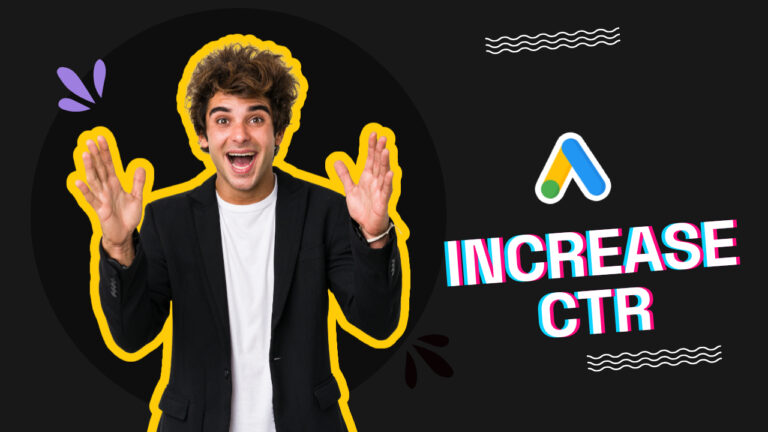There are several reasons why it is important for a WordPress website to load quickly.
First, fast loading times can improve user experience. Nobody likes to wait around for a slow website to load, and a slow-loading website can drive visitors away.
Second, faster loading times can improve the website’s ranking and visibility in search engine results pages (SERPs).
Search engines, such as Google, use the page loading speed as a ranking factor, so a faster-loading website can improve its position in the SERPs.
Finally, fast loading times can increase the website’s conversion rate and return on investment (ROI). A faster-loading website can provide a better user experience, leading to more satisfied visitors and more conversions.
So, if you want to improve the user experience, ranking, and conversion rate of your WordPress website, be sure to optimise its loading speed.
In this article, I will go through 10 things you can do to improve the load time.
Get Fast Hosting
One way to improve the speed of your WordPress website is by choosing a high-quality and reliable web host.
Your web hosting company has the most important role in the loading times. WordPress-managed services, I reckon, are the way to go. As they have highly optimised servers specifically for WordPress.
A WordPress host and other hosts have a lot of differences because of how WordPress works compared to other websites and web applications. Thus, opting for a more WordPress-focused hosting is most likely to beat traditional web hosting.
A good WordPress host will have fast and reliable servers so that your website can load quickly for your visitors. They will have a good uptime to ensure your website is available and accessible at all times.
Optimise Images
Many don’t realise but images can be heavy and can significantly contribute to loading times. It’s important to optimise and reduce the size of your website’s images.
By optimizing and reducing the size of your images, you can drastically improve the loading speed of your website and provide a better user experience for your visitors.
There are tons of free plugins that can help you do this, and they can optimise and compress your images without sacrificing their quality.
Lazy Load Images
Imagine you have ten pictures on a page and each weighs about 1MB. When a page is loaded it adds 10MB to the page making slow as.
What if we could keep all the images but instead of loading 10MB altogether we could break it into chunks of 1MB?
That’s where lazy loading comes in.
Lazy loading is a technique used to improve the performance of a website by loading only the images that are currently visible on the screen, rather than loading all the images on the page at once.
This can help reduce the initial page load time and improve the overall loading speed of the website.
When a user scrolls down the page and an image comes into view, it is then loaded on the page.
This can improve the user experience, especially on websites with a lot of images or long pages.
Caching
Caching is a technique that stores a static version of your website’s pages and posts in the cache, so they can be served to your visitors without having to generate them dynamically each time.
This can help reduce the load on your server and improve your website’s loading speed.
There are various caching plugins available that can help you implement caching on your WordPress website.
Minify JS & CSS
We need to understand a simple formula when it comes to speed, the heavier the pages the more time it will take to load. Not that simple, but this formula can help a lot.
Minification is the process of removing unnecessary or redundant data from a file without affecting how the file works.
This can include removing white space, comments, and other unnecessary characters from the code, as well as optimizing and reducing the size of images and other media files.
The goal of minification is to reduce the size of the file, which can improve the loading speed and performance of a website.
By minifying JavaScript and CSS files, you can remove any unnecessary characters, which will help reduce their size and improve your website’s loading speed.
Combining these files can also help by reducing the number of HTTP requests your website makes.
There are tools and plugins out there that can help you do this easily. Just make sure to choose one that’s reputable and effective. It may take some extra work upfront, but it will pay off in the long run with a faster and more efficient website.
Enable GZIP Compression
Gzip compression is a technique that can be used to reduce the size of your website’s files, such as HTML, CSS, and JavaScript files, by up to 70%.
This can help improve the loading speed of your website by reducing the amount of data that needs to be transferred between your server and your website’s visitors.
Gzip compression works by compressing the files on your server before they are sent to your visitors and then decompressing them on the visitor’s device.
This can reduce the amount of data that needs to be transferred, and improve the loading speed of your website.
Enabling gzip compression is another effective way to improve the speed of a WordPress website. You can enable gzip compression by adding a few lines of code to your website’s .htaccess file, or by using a plugin.
Most web hosting does it automatically and no action is required from your end. To double check contact your web host.
Use CDN
A content delivery network (CDN) is a network of servers that are distributed across different geographic locations.
The main purpose of a CDN is to deliver content to users from the server that is closest to their location, which can improve the loading speed and performance of a website.
A CDN can be used to deliver a variety of content, including images, videos, audio files, and other static files, to users from a network of servers instead of a single web server.
This can help reduce the load on the web server and improve the loading speed and availability of the website.
Let’s say you are hosting your website with a server in the US but all your website visitors are from New Zealand.
Without CDN, when someone visits your website, a request will go to the US and come back. Even though it is very very fast compared to human travel times but still it will be in seconds which is too slow for data.
With CDN, the same request will go either to NZ or AU (most providers don’t have a location in NZ) and return which is usually in milliseconds.
There’s a very popular and free service called Cloudflare that will drastically improve your website if you are not using a CDN at the moment. Try them out its free tier is very generous.
Optimise Database
WordPress has a database in the backend that stores data for themes, plugins, pages, posts and everything else that needs a database.
As the database grows it takes more space and more time to access and retrieve data. That is when database optimisation steps in to improve the efficiency of its queries and operations.
Did you know? Plugins that you install, test and remove may create tables in your WordPress database and most of the time they do not delete those tables when you uninstall the plugins.
Thus, over time, the database can become cluttered and bloated, which can affect the performance and speed of your website.
The database is crucial, your website will NOT work without it. So make sure you only jump on this train if you know what you are doing. Use reputable plugins that have a history in database optimisation.
A single mistake can take down your whole website. So be cautious.
Enable Keep-Alive
Keep-alive is a feature of the HTTP protocol that allows a single TCP connection to be used for multiple HTTP requests and responses.
This can reduce the overhead and latency of establishing multiple connections, and improve the loading speed of a website.
This is an advanced feature and requires an understanding of servers and how they work. Please speak to your hosting provider to see if this is already enabled otherwise you can use the code below or use a plugin.
<IfModule mod_headers.c> Header set Connection keep-alive </IfModule>
You can also use a plugin, such as Keep-Alive, to enable keep-alive on your WordPress website.
Fewer plugins
You may not be aware of the potential impact that plugins can have on website speed, and may simply install any plugin that you think might be useful without considering the overall effect on the website.
I am not saying plugins are not useful. They are indeed the secret to WordPress success. However, plugins for small things should be avoided at all costs.
Think of plugins like this, unless it is crucial do not use it. If it is a good-to-have feature then do not use it.
Each plugin adds additional code that the website needs to load. This can increase the number of HTTP requests that the server needs to handle, which can make the website slower to load.
Additionally, some plugins may not be well-coded, which can cause conflicts and slow down the website even further.
Install a plugin is a must not good to have and regularly review and remove any unnecessary plugins to help improve your website’s speed.
A fast-loading WordPress website is a key to success! With a little bit of effort and some clever tricks, you can speed up your website and provide a smooth, enjoyable experience for your visitors.
Just remember to keep things light, optimize your images, use lazy loading, enable caching, minify your code, and avoid using too many plugins.
Happy optimizing!






